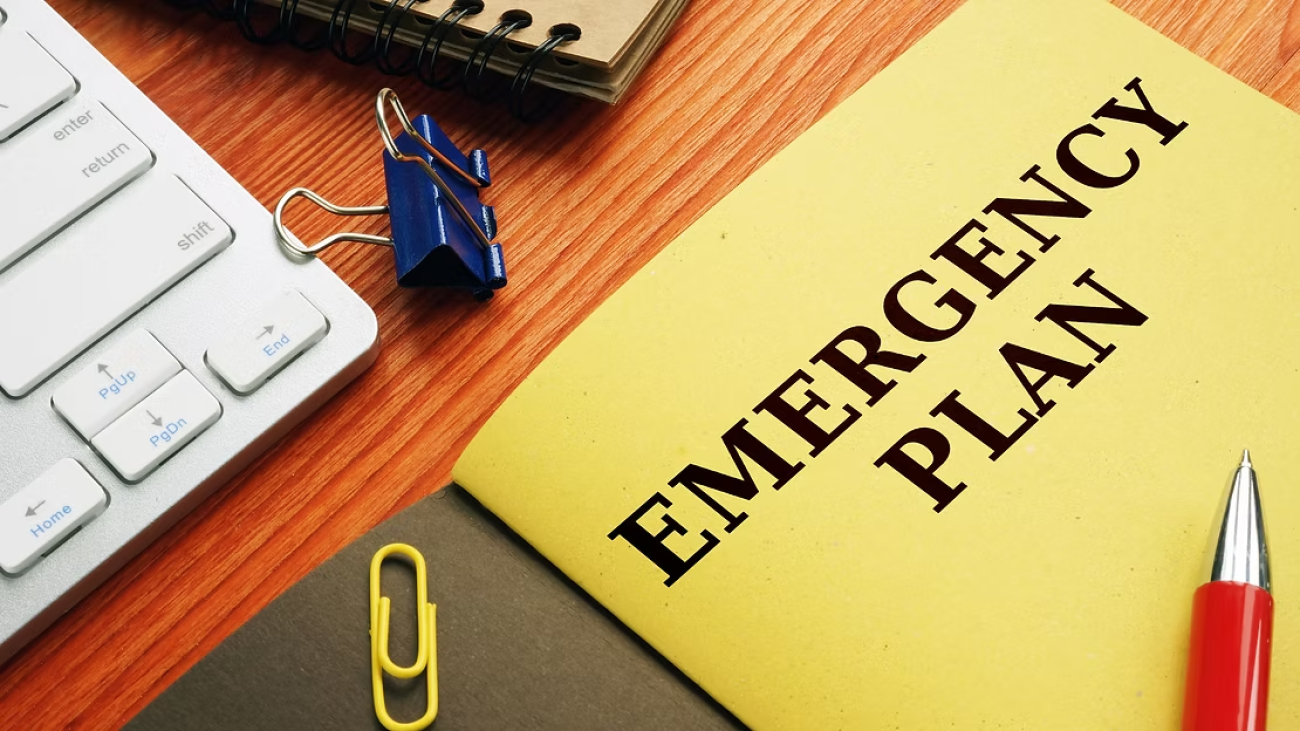Disasters don’t care where you live. Even places once considered safe from extreme weather are facing hurricanes, wildfires, tornados, and earthquakes. Maybe you’ve never had to evacuate—but at some point, you will. It’s not a matter of if, but when.
I used to believe the mountains were a safe place. Then Hurricane Helene proved me wrong.
The power was already out before the storm even arrived, and the darkness was suffocating. I paced the living room, watching the creek behind my house swell higher and higher. My anxious dog, Harley, followed my every move, feeding off my anxiety. The wind didn’t just bend the trees—it snapped them, sending them rushing downstream in the raging flood forming in my backyard. There was nothing I could do to stop it. As the floodwaters crept closer, the reality sank in—I had no plan, no clear next step, just rising panic.
That moment changed everything. If you have a dog, take this as your sign: you need a plan. Here’s how to make sure you and your pup are ready before disaster strikes.
1. Pack a Go-Bag for Your Dog
When you have minutes to leave, the last thing you want is to be scrambling for essentials. Keep a dedicated emergency bag packed and ready with:
Leash, Harness, and Collar: A sturdy set for security and control
Comfort Items: A favorite blanket and toy to help ease anxiety
Edible Chews: Long-lasting chews to keep your dog occupied and relieve stress
Food & Water Bowls: Collapsible, lightweight, and easy to clean
Medications & Vet Records: Store in a waterproof bag
First Aid Kit: Bandages, antiseptic, tweezers, and pet-specific medical supplies
Poop Bags: Enough for multiple days
2. Know Where You’ll Go Before You Need To Leave
Don’t wait until the last minute to evacuate. If evacuation seems likely, leave early. Roads are safer, shelters and hotels have more availability, and you won’t have to fight through traffic or risk losing cell service.
Not all shelters and hotels allow dogs, and finding a place last minute is a nightmare. Plan ahead:
Pet-Friendly Hotels: Research now and keep their contact info saved
Emergency Boarding Facilities: Find backup locations in case hotels are full
Friends or Family: Arrange a safe place your dog can stay
Transportation: If you don’t have a car, locate pet-friendly public transit options
3. Make Sure Your Dog Has ID
If you get separated, proper identification is the fastest way to reunite with your dog:
Collar with Up-to-Date Tags: Ensure your cell number is listed
Microchip: Register it and confirm your contact details are current
Write Your Phone Number on Their Belly with a Sharpie: If their collar falls off, this could be the best way for someone to reach you
4. Public Training Matters
While regular life can make it easy to avoid your dog’s triggers, a crisis changes everything. If your dog isn’t used to being in public spaces, evacuating to a shelter or hotel can be overwhelming. Start training now so they can handle unfamiliar situations more easily.
Crate Training: A dog who loves their crate will feel safer in shelters and hotels
Car Rides: Take them on regular trips so they’re comfortable in a vehicle
Public Exposure: Gradually introduce them to busier environments, new people, and different surfaces
Muzzle Training: If you end up in a crowded shelter or have to interact with strangers, a muzzle can prevent stress-related incidents
5. Keep a One-Month Supply of Food & Meds
Evacuations can be chaotic, and supplies become suddenly sparse. Always have at least a month’s worth of essentials on hand.
Emergency Food: Keep shelf-stable options like freeze-dried raw, air-dried, or kibble
Medication Supply: Ensure you have at least a one-month backup of any essential prescriptions
Extra Prescriptions: Ask your vet about getting an emergency refill
The Bottom Line: Prepare Now, Not Later
Extreme weather and natural disasters can happen anywhere, at any time. The best time to prepare was yesterday—the second-best time is right now.
✅ Pack an emergency go-bag
✅ Plan where you’ll evacuate to
✅ Train your dog for stress and public spaces
✅ Keep extra food and medication on hand
Have an emergency plan for your pet? Drop your tips in the comments!


